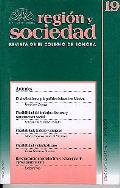 |
 |
 |
 |
 |
 |
 |
 |
 |
 |
 |
 |
Abstract
Throughout this article different theories and experiences on labor flexibility in Mexico are presented. The text begins with a summary of the main theories andarguments on labor flexibility in Latin America . Subsequently, the Mexican case and its different stages are analyzed: 1) the period from 1980 to 1992 is a stage which features a unilateral flexibility and the implementation of a new economic model, 2) from 1992 to 1994, a new flexiblity is attempted to create with the participation of unions but still managed by companies, and 3) from 1995 on, an alliance between enterprises and unions has been sought through the signing of productivity agreements, without much success, and significant dissensions in the official labor unionism have appeared. Among other aspects, this work shows that low wages comparative advantage still plays a determining role and is one of the factors which has caused a lack of modernization in exporting firms in Mexico. In addition, the article argues that characteristics of the Federal Labor Law, collective agreements, different company strategies for modernization, and the peculiarities of industrial relations and the Mexican political system explain the causes for the limited expansion of labor flexibility in Mexico.
Open access policy
The authors who publish in región y sociedad accept the following conditions:
In accordance with the copyright laws, región y sociedad recognizes and respects the authors’ moral rights, as well as the ownership of property rights, which will be transferred to the journal to disseminate the articles in open access. región y sociedad does not charge the authors for submitting and processing articles for publication.
All the texts published by región y sociedad —with no exception— are distributed under a Creative Commons license 4.0 Attribution – Noncommercial (CC BY-NC 4.0 International), which allows third parties to use the publication as long as they mention the works’ authorship and the first publication in this journal.
The authors can enter into independent and additional contractual agreements for the nonexclusive distribution of the version of the article published in región y sociedad (for instance include it into an institutional repository or publish it in a book) as long as they clearly indicate that the work was published for the first time in región y sociedad.
For all the above, the author(s) must send the Letter of transfer of property rights of the first publication duly filled in and signed by the author(s). This letter can be sent by e-mail as a PDF to: region@colson.edu.mx






